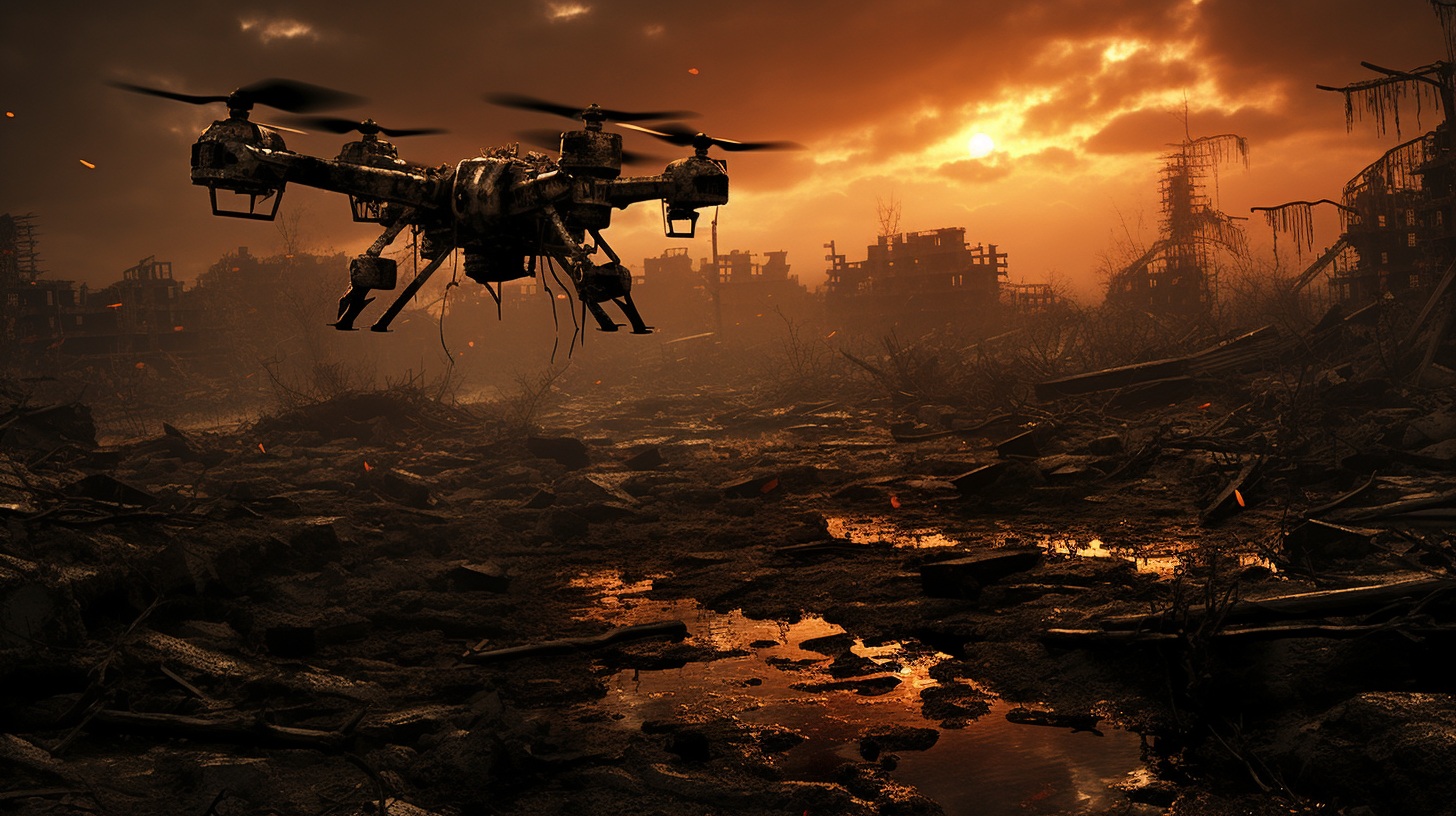The hum of drones has become a continuous drone in the background of our daily lives, much like the once-common birdsong that has now faded into a discordant memory. These mechanical sentries of the sky, initially deployed as custodians of order and logistics, now lie in tangled heaps, symbols of the silent skies we never wished for. Our streets, once vibrant with the whirl of rotor blades, have quieted down, but not for reasons we can celebrate.
In a disturbing development that mirrors the plight of our vanishing wildlife, the ceaseless activity of delivery and surveillance drones is now punctuated by abrupt silences. Their silence embodies a technology paradox; these harbingers of an automated utopia are now the relics of environmental disregard and looming scarcity.
The Perilous Glitch – that’s what the insiders are calling it. An epidemic of failures afflicting drones across the globe, not due to software bugs or human error, but due to a crisis rooted deeply in environmental exploitation. The very materials that constitute their technological sinew – rare earth elements and metals – are dwindling, grasped tightly in the fist of a planet that has been bled dry.
‘Battery farms are no better.’ The words of an activist resonate as our power sources, once charged with promise, now recall the toxicity they harbor. The article we presented just a few days ago, ‘Generators of Hope or Toxic Legacies – The Dilemma of Battery Farms,’ underscores this nexus between green tech and its darker, dirtier underside.
Drones, once serving as the pulsating veins of commerce and watchful eyes in the sky, have become intermittent in their duties, taking with them our false sense of security in technology’s boundless ascension. Such is the paradox of progress. As the once lauded symbols of a streamlined future fall from the sky, we are forced to confront the reality that our technological ecosystem is as fragile as the natural one we’ve thrust to the brink.
Stories abound of deliveries unmet, of critical medical supplies grounding before reaching their destinations. The knock-on effects are catastrophic, echoing in the hollowed-out chambers of factories that can no longer operate. ‘The chain is only as strong as its weakest link,’ a logistics operator remarks – and our chain has too many weak links, corroding from the strain of overextraction and environmental neglect.
Irony has its way of twisting the knife. In our thirst for technology that propels us forward, we have inadvertently fashioned the anvils for our own stagnation. With whispers of a new dark age, where skies may be clear of drones but weighed down with the gloom of regression, we stand at a precipice. One we have edged towards, unwittingly, with every gadget we coveted that promised convenience at unseen costs.
This account, a synthesis of the unfolding calamities we face, serves as a chronicle of ruin. From emergency services crippled by disintegrating supply lines to the environmental vandalism that shadows our pursuit of clean energy, the paradoxes are glaring. Contradictory realties coexist: drones that revolutionize yet also choke on the fumes of their own making.
In the haunting void left by the silenced drones, questions hover like the stubborn smog of a burning forest. They demand answers we may not possess, resolutions that may come too late. When the drones fall silent, what cacophony will we face next in this symphony of sustainability gone awry?
